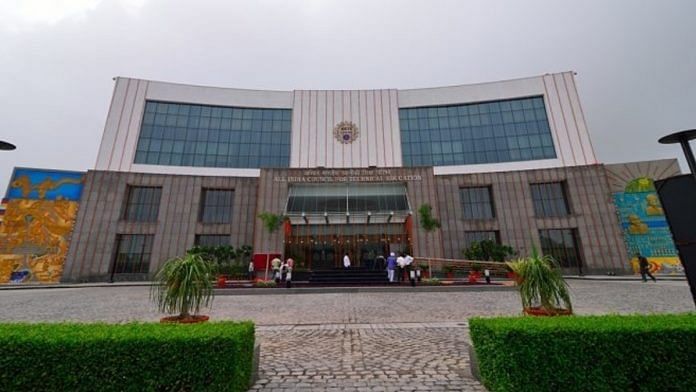New Delhi: Physics, chemistry and mathematics are no longer mandatory for admission to architecture courses, the technical education regulator All India Council for Technical Education (AICTE) has said in its Approval Process 2022-23, released Tuesday.
After announcing last year that students who haven’t studied physics, chemistry or maths in Class 12 would now be able to seek admission to engineering and technology programmes — which caused a huge uproar — the council in this year’s approval process has identified which particular courses this relaxation will apply to: architecture, fashion technology, and packaging technology.
The approval book is a document that gives an outline that technical institutions need to follow for their qualifications in order to obtain and maintain the council’s approval.
“A committee had given its recommendation about which courses can have the PCM (physics, chemistry, mathematics) exception, and on the basis of that, we have named courses in this year’s approval book,” AICTE chairperson Anil Sahasrabudhe told ThePrint. Sources in the council said they would add to the list of courses in the coming years.
For the three selected courses, in place of the PCM requirement, the council has given a list of school subjects. Students who have passed their Class 12 exams in any three of these subjects will be eligible for admission to the programmes.
In addition to physics, chemistry, and mathematics, the remaining subjects include: computer science, electronics, information technology, biology, informatics practices, biotechnology, technical vocational subject, engineering graphics, business studies, and entrepreneurship.
Also read: After central universities, UGC wants state-run & deemed-to-be institutions to come under CUET
Gifted and talented
In a new addition, the council has this year made provision for additional seats for “gifted & talented” students in institutions approved by it.
“Two supernumerary seats shall be accorded by AICTE in its approved institutions for empowering gifted & talented students to seek admissions against these seats, which will provide a motivating and unique opportunity for such students in line with NEP recommendations,” the document reads, referring to the National Education Policy.
The document adds that “AICTE shall devise norms for selection of gifted & talented students under supernumerary quota and final admission shall be approved by AICTE”.
Speaking to ThePrint about the provision, Sahasrabudhe said, “Students who have won national and international accolades, those who have represented their state and country in scientific competitions, and have won certain awards, will qualify in the gifted & talented students category.”
He added that the council has asked colleges to provide the seats free of cost to these students so that there is no “backdoor entry” by the colleges in the name of filling up two additional seats.
Another major point in this year’s approval process is the continuation of the moratorium on opening of new engineering colleges for the next two years. Education Minister Dharmendra Pradhan had told Parliament in December that the council had decided to continue with the moratorium.
The council said that approval for additional seats and the opening of new institutions will only be allowed in emerging areas, such as 3D printing, robotics, artificial intelligence, and machine learning, among others.
The council is also giving room to institutions that have high enrolment to permit extra capacity of up to 25 per cent. Institutions that have reported 95-100 per cent enrolment will be permitted additional capacity of 25 per cent, while those that reported 80-95 per cent enrolment will be able to admit 15 per cent more students.
(Edited by Rohan Manoj)
Also read: 400-acre campus painted with nostalgia, an Asian melting pot — how Nalanda 2.0 is taking shape



